#andreas vesalius
Text
Collage box collection
After discovering that I had a reasonably big stash of interesting flyers, greetings cards, guidebooks and other bits of ephemera, and seeing this tutorial, I was really inspired to use it all for something.
This was helped by the fact that recently I've found a lot of really nice wooden boxes in charity shops for very cheap - all the ones pictured here were £2. Either I've been extremely lucky, or these things turn up very often and I just haven't been looking for them.
I've posted about some of these previously (here and here), but they were only half done and these pictures are better! Plus there is one new one.
First was this wooden chocolate box. Before...
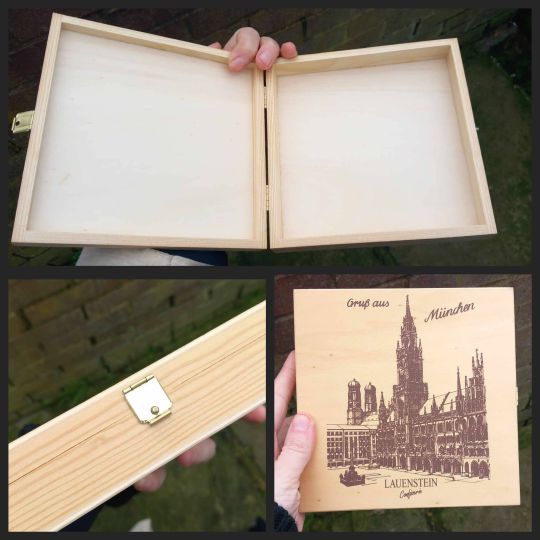
And after!
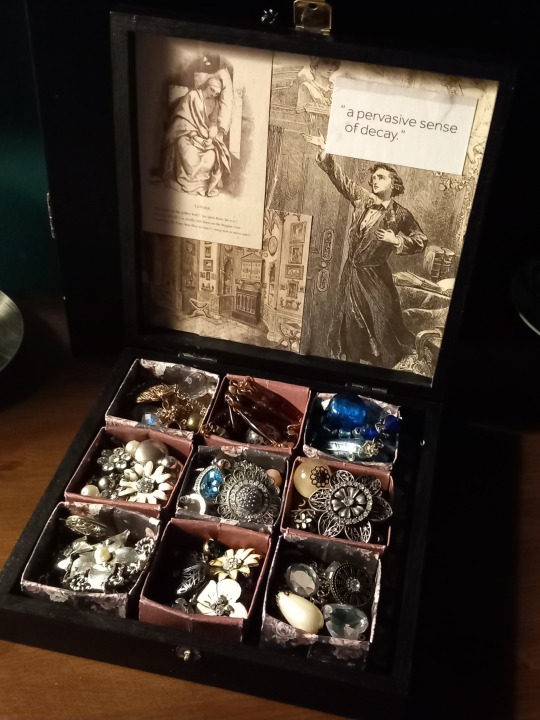
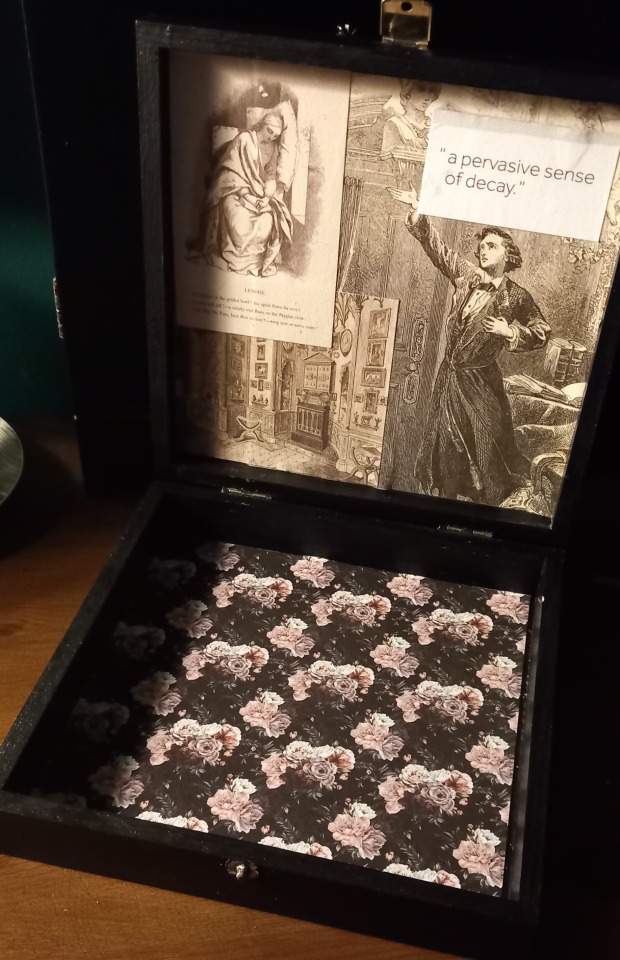
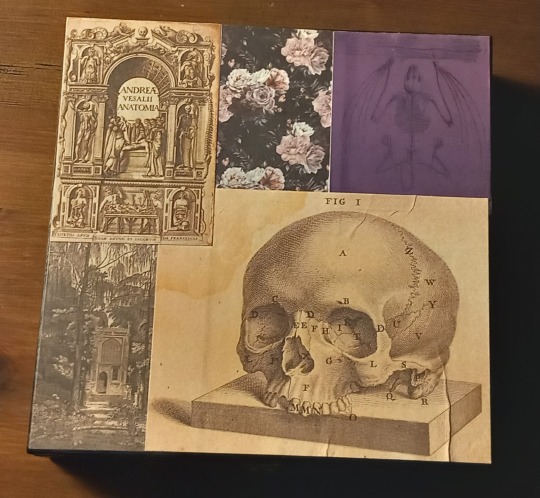
You can tell this is my first one as I oversatured the paper with Mod Podge, leading to it bubbling and creasing, but for a first attempt I don't think it's bad at all.
All the pictures I used were taken from an exhibition guide for an event I went to called "Exploring the Gothic" which contained a lot of beautiful pictures. The floral parts were from a pad of scrapbooking paper, which I also used to make the individual compartments (they are origami boxes, see a tutorial for how to make them here) and I then filled them with pieces from my collection of beads, charms, and broken jewellery.
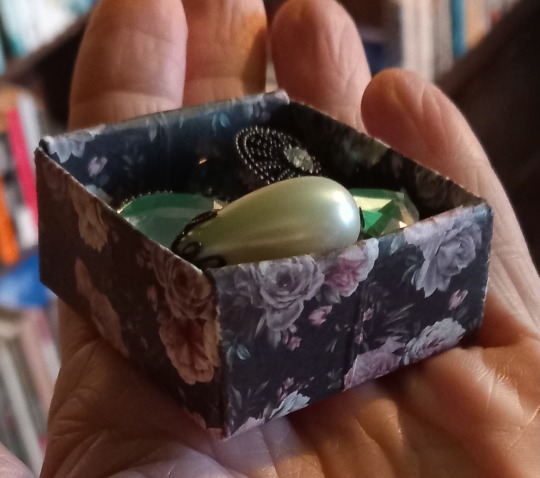
I also had a guide to a William Blake exhibition I'd been to, and since there was an entire plate from "The Marriage of Heaven and Hell" I had to make it into a miniature wall plaque.
I did this one at the same time as the first, and again you can kind of see that I oversatured the paper which caused it to tear slightly, however thankfully it wasn't in an area where there was any writing.

(BTW, if anyone is interested in the meaning of this section, Blake is describing his creative process, albeit in a fantastical way. This blog post gives a good analysis)
The next one was a beautiful little cabinet with a broken handle.
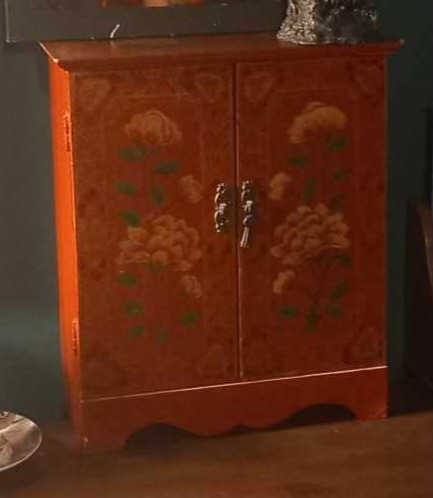
And here is what I did with it. I kept the collaging to a minimum, only on the inside, though I might add something to the outside in the future. The replacement "handles" are a pair of my earrings!

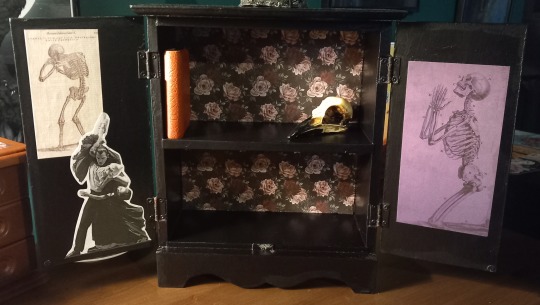
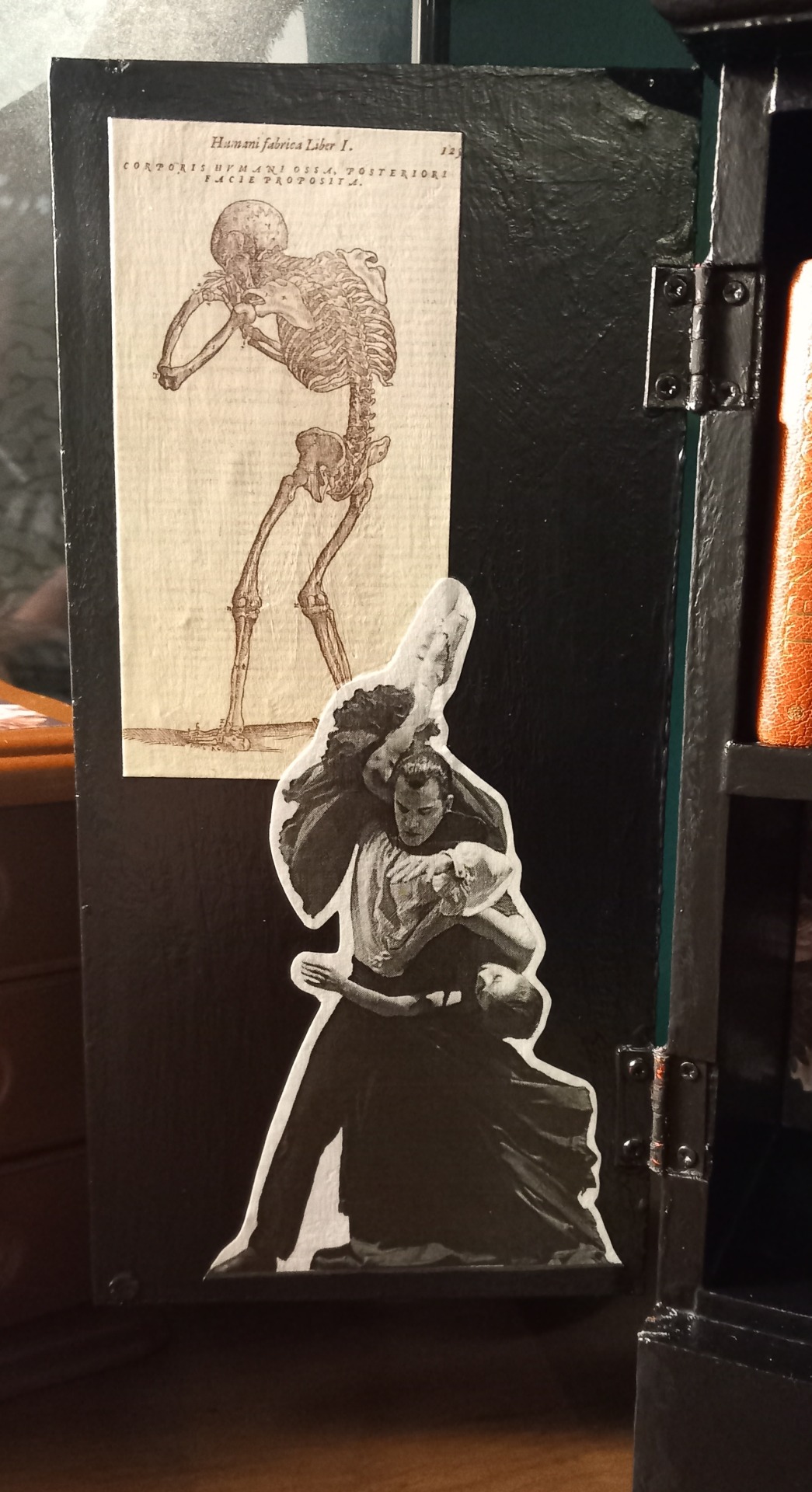
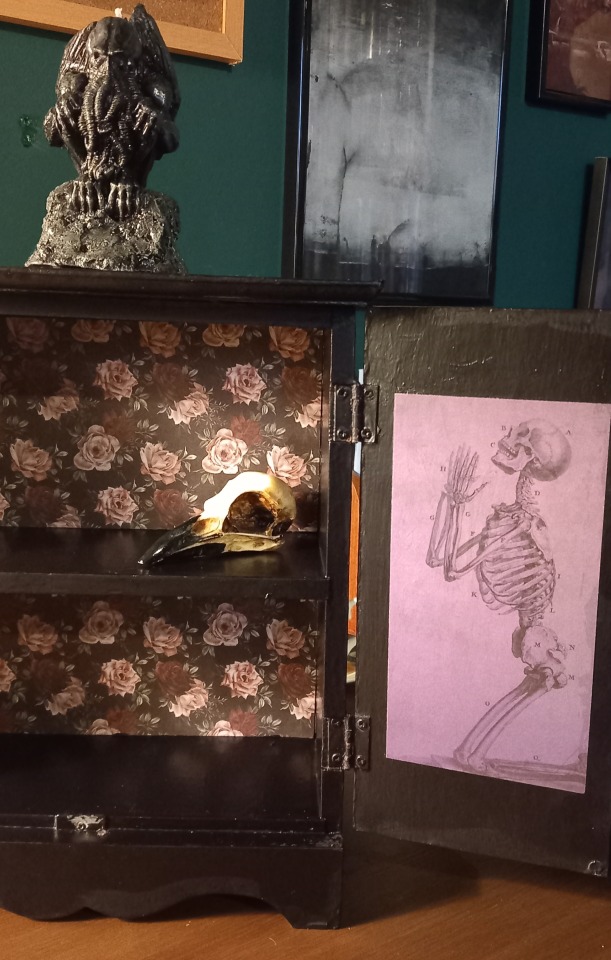
I used some more of the gothic exhibition guide and scrapbook paper, and also a flyer for a ballet version of Dracula. I need to find some more interesting things to fill it as it currently only contains my resin crow's skull and a miniature book of Tennyson poems. Also my Cthulhu candle gets to sit on top and be worshipped by the skeleton on the right door.
I did much better with the collaging process on this one. I was a lot more patient, used less Mod Podge for each layer and allowed them to dry fully in between, resulting in no tears, bubbles or creasing.
The final and most recent is this plain box. I noticed it originally came from somewhere called "Palmyra Hardware" which instantly made me think of the Palmyra Wolves (I'm a fan of MrBallen and saw him tell the story on his YouTube channel) which gives a pleasantly creepy angle to this one before I even did anything to it!
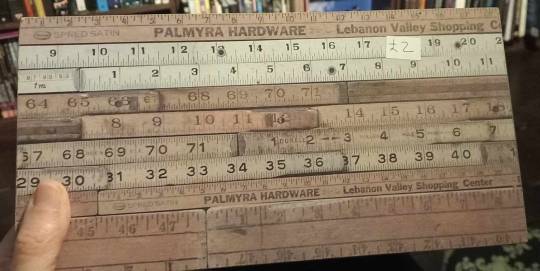
After collaging

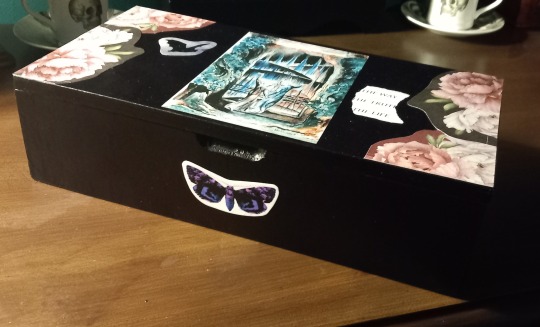
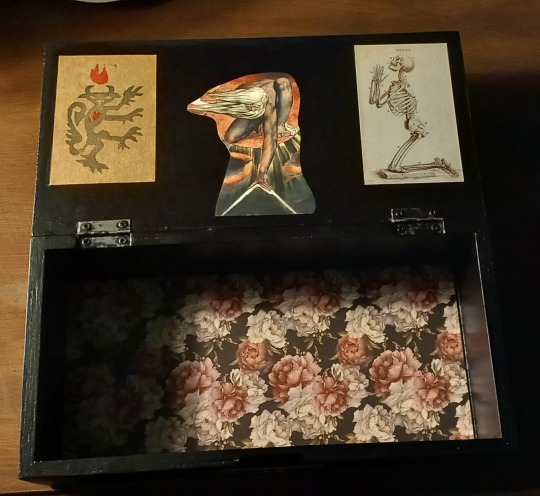
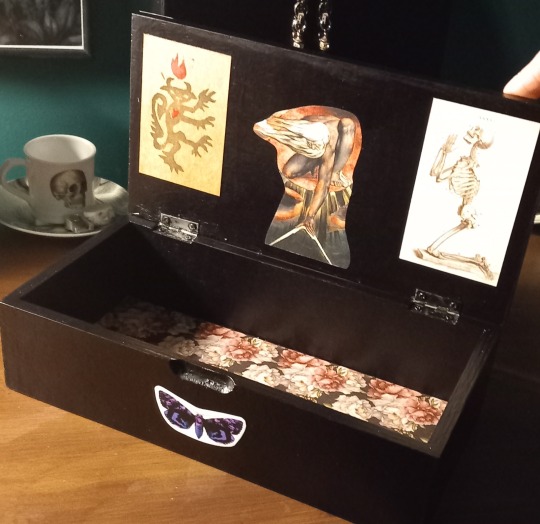
The central image on the outside is another William Blake painting, an illustration to Dante's Inferno, which includes the famous quote "Abandon All Hope, Ye Who Enter Here". The writing saying "The way, the truth, the life" came from a religious leaflet that a friend of mine was forcibly given, and which he ripped to shreds, but I saved this part because for some reason I liked it.
Inside we've got a very famous Blake painting called "The Ancient of Days", the praying skeleton again as this image was reproduced several times in that guidebook, and a block printed demon from a handmade birthday card that a friend gave me several years ago. I'm very pleased to have finally been able to use him for something!
I've enjoyed making all of these immensely and no doubt I will do more in the future as I collect more papers and find more nice boxes 😊
#collage#paper art#paper craft#decoupage#mod podge#goth diy#gothic#goth#gothic art#andreas vesalius#anatomical drawing#william blake#the marriage of heaven and hell#charity shop finds#thrifting finds#hand crafted#crafting#crowcore#corvidcore#ephemera#shiny things#shinies#origami#goth aesthetic#diy craft
24 notes
·
View notes
Text

Lino study of a woodcut illustration in De humani corporis fabrica (1543) where the dura mater has been peeled away to show the brain and blood vessels. I finally forced myself to attempt this kind of crosshatching effect, and it may not be particularly precise but it has added some interesting texture to the print!
#anatomical illustration#andreas vesalius#medical history#linocut#relief print#blockprinting#printmaking#art#might put a few of these guys up in my etsy shop over the weekend who knows ;)
16 notes
·
View notes
Photo

A rare chance to snag some one of a kind pieces! Sale ends June 30th at 11L59pm! Use the word STITCH to snag something!
* Come and See is not available
( Strixes’ Sabre )
#embroidery#anatomy#human anatomy#anatomical#STALKER#andrei tarkovsky#arthouse#dissection#occult#esoteric#bartholin#the art of anatomy#Сталкер#criteron#Andreas Vesalius
10 notes
·
View notes
Text
Dissection
@vamptember
At dusk, Andreas Vesalius left his Paris lodgings and ventured into the confines of Cimetière des Innocents. He passed the charnel house, barely casting an eye at the celebrated Danse Macabre and continued on, in pursuit of the freshly dead. There was no difficulty in locating the open grave. He tightened a handkerchief over his nose and mouth. An hour before, he'd soaked it in Vinaigre des Quatre Voleurs and despite this precaution it was only just pungent enough to prevent him from gagging. He surveyed the bodies.
The young scholar enjoyed a respectable life studying anatomy at the University but had to depend on this darker habit to learn dissection. He crossed himself and walked the length of the pit. He wished he hadn't come this evening, the moon was proving shy and only a single lantern was lit at the centre of the rough site. He looked towards it now and blinked. Was there someone there? He wasn't sure whether to regret the warming brandy he'd had before he set out, or his late nights of study in his makeshift morgue. He rubbed his eyes. No, there was someone there, face as pale as any moon. A boy.
"No child, this is no place for a lad like you. Come away!"
But the figure had vanished. Very wise, he thought to himself and turned for home. He would arrange a cart for a brighter night.
Andreas Vesalius ~
Vinaigre des Quatre Voleurs ~
Cimetière des Innocents and the Danse Macabre ~
#vamptember#armand#les innocents#interview with the vampire#anne rice#andreas vesalius#death#horror#tw deatb#tw horror#tw gore
6 notes
·
View notes
Photo

eucanthos

Brendon McNaughton: Monopoly, 2017
Andreas Vesalius: De corporis humani fabrica libri septem, 1543 (Page 178)
19 notes
·
View notes
Photo

HI ANDREAS👋👋👋
#andreas vesalius#i still need to catch up on puppet history lol but i was looking at the emails#and wow look it's one of my scientific revolution guys <3#and on the video about robert liston too... ����.👁 i know these people
2 notes
·
View notes
Text
0 notes
Text
0 notes
Photo

Andreas Vesalius was born on December 31, 1514. A 16th-century anatomist, physician, and author of one of the most influential books on human anatomy, De Humani Corporis Fabrica Libri Septem (On the fabric of the human body in seven books). Vesalius is often referred to as the founder of modern human anatomy. He was born in Brussels, which was then part of the Habsburg Netherlands. He was a professor at the University of Padua (1537–1542) and later became Imperial physician at the court of Emperor Charles V. Among his achievements were disproving the common belief that men had one rib fewer than women and concluding that nerves are not hollow.
#andreas vesalius#anatomy#biology#physicians#science#science history#science birhdays#on this day#on this day in science history
1 note
·
View note
Text
You ever get the feeling that sometimes the universe thinks the time is right for a specific project?
Earlier this week, heavily inspired both by @rattusrattus3 and their collage box youtube tutorial, and the gorgeous corvid boxes posted by @korva-the-raven, I decided to make something similar myself. THE DAY AFTER that decision was made I found this wooden chocolate box in a charity shop for £1.99. It could not be more perfect for purpose.
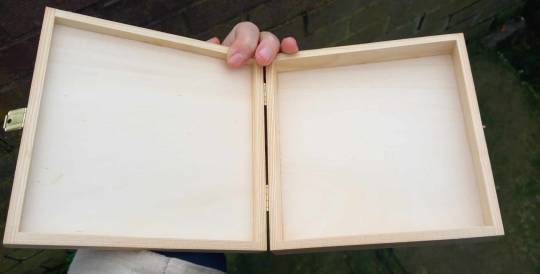


I had been thinking the collage part would be difficult as I "don't really keep interesting bits of paper." As it turns out, the hell I don't.
That same evening I found this stash in my old art folder. I thought all I had in there were a couple of greetings cards.
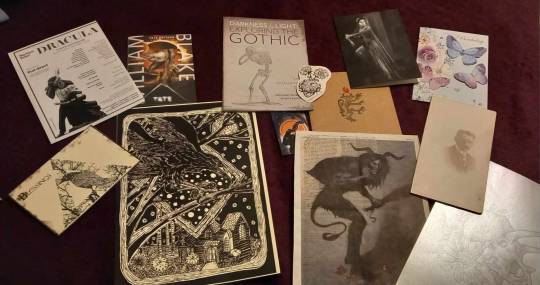
Of particular use were the William Blake and Exploring the Gothic art exhibition guides. These are both really high quality prints and contain some gorgeous artwork. Thankfully I have a paper guillotine so I could cut out the pictures really neatly.

This is what I ended up with. I could make several boxes just from these!
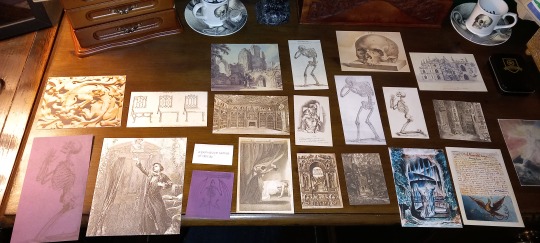
Korva's boxes have individual compartments made out of matchboxes which are also decorated. I don't have any matchboxes, but then I recalled that I know how to make an origami box - I had a friend in school who was Japanese and her mother taught me. So, what if I was able to find some nice paper and make small boxes to go inside? Again, the universe provided...

These are from a pad of scrapbooking paper, 24 double sided sheets, 30x30cm (12x12 inches) for £4. Very thick and high quality and excellent for making sturdy boxes that are fit for this purpose. I didn't love all of it but these designs are beautiful, and I will have more than enough for this project and tons left for the future 😁
I thought to save it looking too "busy" I would just use one plain colour and one floral. Since the internal boxes need to be quite small I thought a smaller print would work best, and paired that with a plain purple. I used the guillotine again to cut the paper into squares that were the right size (after a trial run with some cartridge paper to make sure they would fit) and...
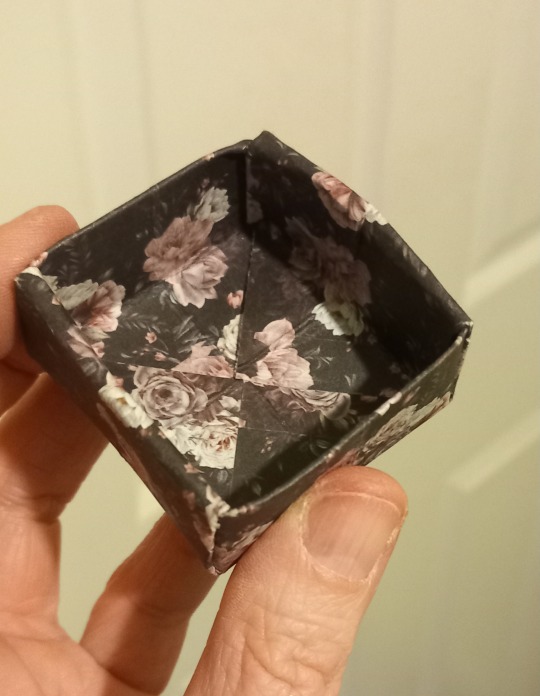
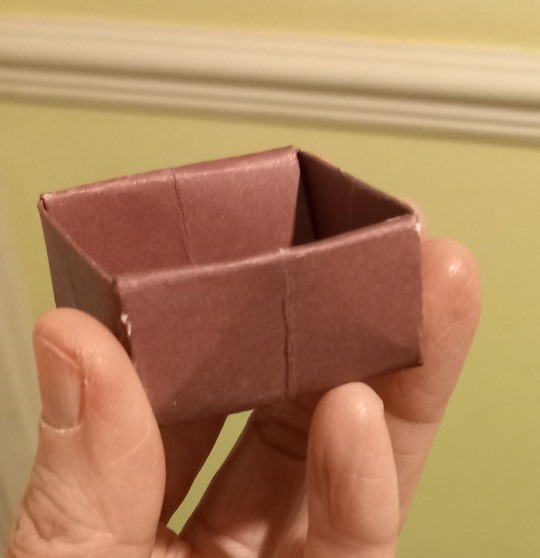


This box is super easy to do, probably why I still remember how to make it after being taught at the age of 5! Here's a tutorial.
Meanwhile the outer box got a couple of coats of black acrylic paint.

Then it was time to decide how to arrange my collage pieces. I quickly came up with this for the inside (Edgar Allan Poe themed, the large picture is an illustration to "The Raven" which is super appropriate for a corvid box, and the small one in the top right has lines from the poem "Lenore"). I'm still unsure about whether I will also do the base as its going to be covered most of the time anyway. I may just line it with more of the floral paper.
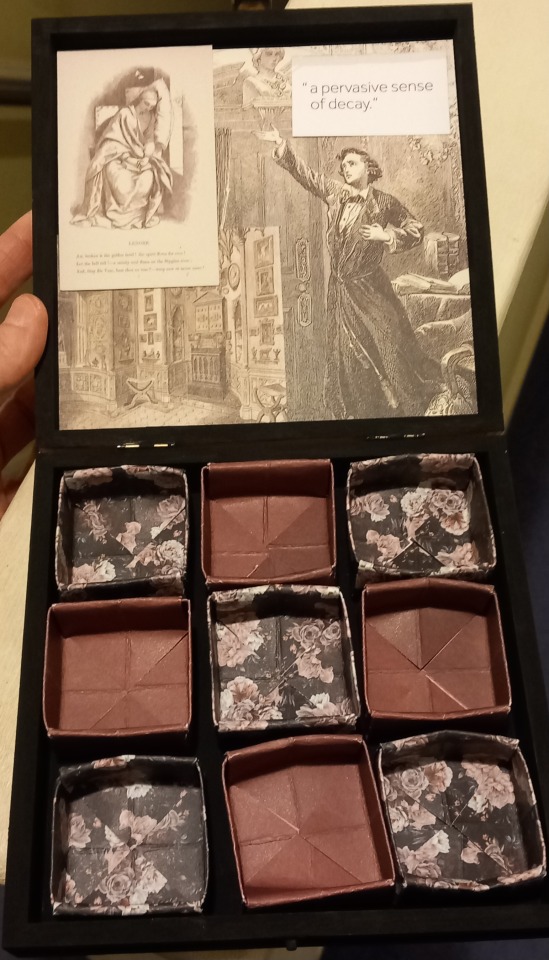
The outside was harder, but I've gone with some anatomical drawings, plus a couple of space-fillers which look pretty.

The edges are a little narrow so I'm not going to collage those for now, but I might see if any of the charms from my shiny things box would look good glued onto the sides instead.
Unfortunately I can't finish it just yet, as the only thing I haven't been able to get is modge podge - every shop I went into said "we used to have that but don't stock it anymore". So I ordered some online and I should have it within a few days.
Then all I'll need to do is decide how I want to fill it, I have lots of items to choose from 😁
Huge thanks to those who inspired this, it has been a project that I've absolutely loved, and I'm going to be on the lookout for more nice boxes so I can make another, I still have plenty of supplies!
#diy craft#collage#Collage box#goth diy#goth aesthetic#corvidcore#crowcore#crow aesthetic#gothic art#edgar allan poe#andreas vesalius#anatomical drawing#gothic#goth#crafting#crafts#craftblr#Goth crafting#paper art#paper craft#papercraft#paper collage#thrifting finds#thrift finds#thrifted#charity shop finds#charity shops#origami#arts and crafts#decoupage
7 notes
·
View notes
Text
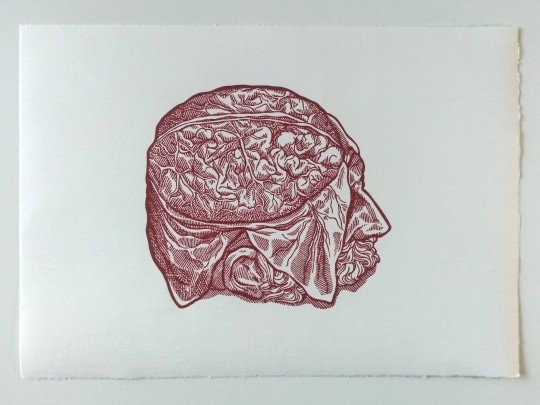

Reposting this study from De humani corporis fabrica because I'm really into the dark red version I've just printed, and it's definitely inspired me to try more anatomical studies in 2024!
#linocut#relief print#blockprinting#printmaking#andreas vesalius#de humani corporis fabrica#anatomical art#medical illustration
19 notes
·
View notes
Text
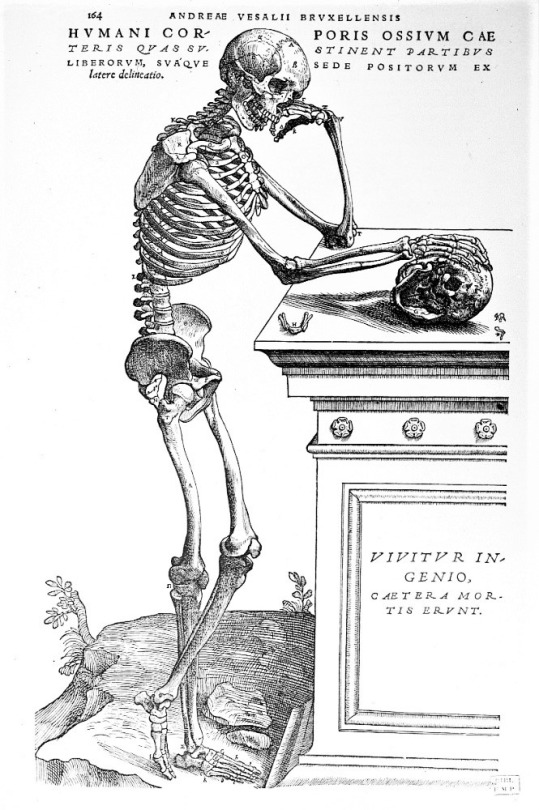
Tiziano Vecellio and Jan van Calcar, illustration for Andrea Vesalius’ de humani corporis fabrica
39 notes
·
View notes
Text

'muscle man,' plate 7 by andreas vesalius, 1934 in spectacular bodies: the art + science of the human body from leonardo to now - martin kemp + marina wallace (2000)
244 notes
·
View notes
Text
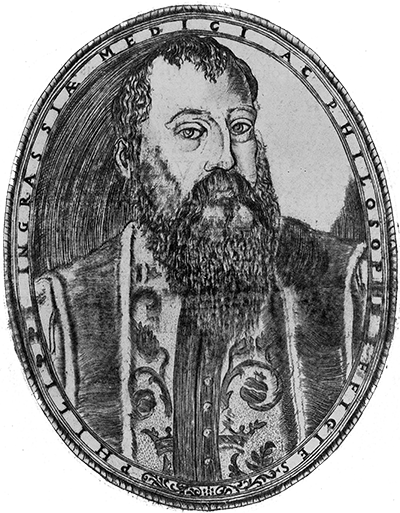
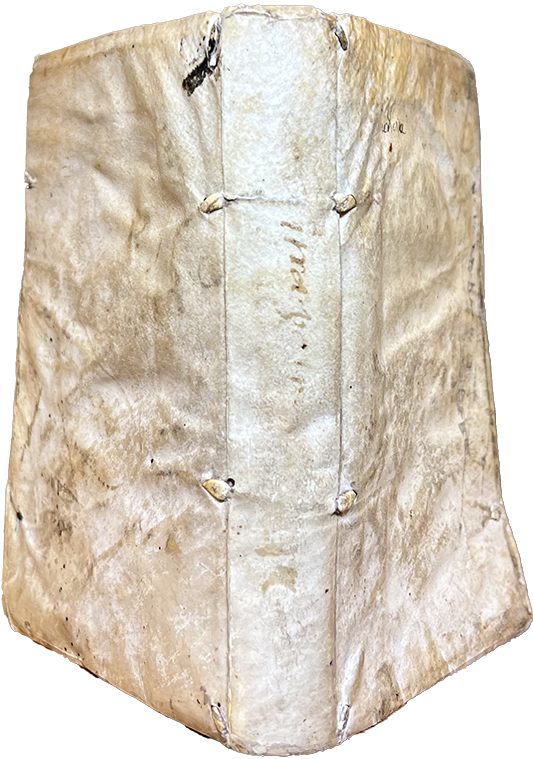
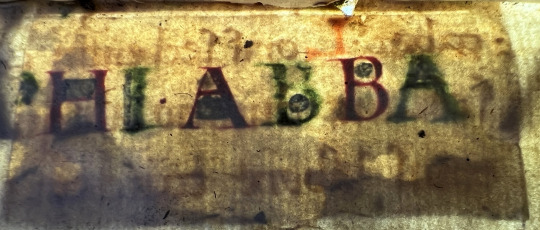

Special Guest Post from John Martin Rare Book Room
Hardin Library of Health Sciences
INGRASSIA, GIOVANNI FILIPPO (1510-1580). Iatrapologia: Quaestio, quae capitis vulneribus ac phrenitidi medicamenta conveniant [Defense of Medicine: Question regarding the medicinals convenient for head injuries and meningitis]. Printed in Venice by Giovanni Griffio, 1547. 16 cm tall.
This month's book was one of six John Martin Rare Book Room items selected to be scanned as part of the Iowa Initiative for Scientific Imaging and Conservation of Cultural Artifacts (IISICCA) project. Iatrapologia (Greek: "defense of medicine") by Giovanni Filippo Ingrassia (1510-1580) was selected for two reasons. One, with backlighting through the thin, limp vellum cover, we were able to determine it had small pieces of manuscript waste that included both green and red inks. Different inks show up at different energy levels in Computed Tomography (CT) scanners - or sometimes not at all. Finding a variety of inks helps to calibrate both types of scanners used in the project.
And two, it's just a darn cool book.
Ingrassia was an influential 16th-century Italian physician. He grew up in a well-educated family and received a classical education. He studied at the University of Padua, one of the most important western centers for the study of medicine and anatomy.
There, he learned from renowned intellectuals and physicians, such as Realdo Columbo, Bartolomeo Eustachi, Girolamo Fracastoro, and, of course, the Anatomaster® himself, Andreas Vesalius. Ingrassia would go on to make his own significant impact on not only anatomical medicine but also public health and hygiene, forensic medicine, and teratology (the study of abnormalities of physiological development).
After completing his studies in 1537, he became the personal physician to a minor Italian noble family in Palermo. Soon after, he became the professor of human anatomy at the University of Naples. It was during his time in Naples that he wrote Iatrapologia. Ostensibly a book about how to treat head wounds, it was also a critique of the current state of medicine and surgery - one of the subtitles, liber quo multa adversus barbaros medicos disputantur, translates as "a book in which many things are argued against the barbarian physicians."
In Iatrapologia and elsewhere, Ingrassia argued that medicine should be considered a less subjective discipline. Treatments should be verified, results checked, and useful diagnoses disseminated among physicians. He also thought that physicians and surgeons should be integrated into a single profession to prevent surgeries by "unqualified" people. Indeed, in Iatrapologia, he states rather dramatically,
"Oh, God, so much human suffering has been caused by the vainglory of contemporary doctors. Indeed, surgery has been abandoned to some inexperienced, empiric [i.e., quack] physicians, most of whom are not only lacking in dogma, but also in what relates to the Art." p. 252
Ingrassia was also a strong believer in continuing education, suggesting physicians should refresh their dissection skills every five years so as to avoid becoming "imperfect and ignorant physicians." If nothing else, Ingrassia demonstrated a natural skill with insults!
Ingrassia made significant contributions to the field of anatomy, particularly with bones and the skull. He is most well known for identifying a third small bone in the middle ear, which he called the "stapes." He also described differences between human and animal bones, breaking down parts of each bone to make identification easier.
Ingrassia was not only a physician and anatomist but also a pioneer in public health. He held various political positions, most notably Protomedicus (chief physician) of Sicily, and implemented measures to prevent the spread of diseases such as malaria and the plague. He emphasized the importance of preventive measures, such as isolating infected patients and cleaning objects to reduce the risk of transmission.
Overall, Giovanni Filippo Ingrassia was a remarkable physician and scientist who significantly contributed to our understanding of human anatomy and the practice of medicine.
Our copy of Iatrapologia is a delight to hold and leaf through and, as indicated, holds a few secrets inside. The limp vellum cover is soft but dried out enough that it has a bit of a rattle while opening. The cover image above shows discoloration from use and bits of writing here and there. The textblock is in excellent shape, the paper bright, and almost completely free of damage.
One interesting surprise is a piece of paper that has been pasted over the verso side of leaf A3 in an attempt to cover up a printer's error (a repeated page from elsewhere in the book). At some point, someone made a concerted effort to remove the paper to see what was underneath. Whoever glued it on, though, made sure the vandal couldn't remove much!
Other surprises can be seen in the images above. The images show close-ups of the text visible with backlighting. In one image, green and red inks are still vibrant and really jump out. The IISICCA group estimates the date of the manuscript to be roughly the 10th or 11th century and suspects the complete word is some form of "archiabbas" (chief abbot).
Another image shows a small scrap where the photo is repeated several times. Different photo filters were applied in an attempt to make the text more legible.
Contact me to take a look at this book or any others from this or past newsletters: [email protected]
#medicine#medical history#rare books#library#special collections#history#uiowa#Giovanni Filippo Ingrassia#public health
76 notes
·
View notes
